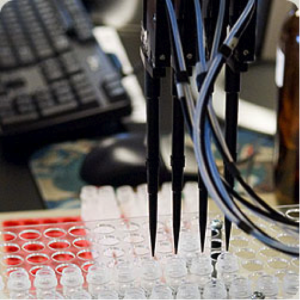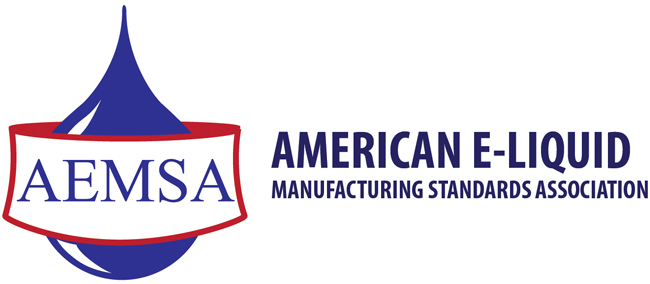 The e-liquid industry has come a long way over the last 5 years. AEMSA members have implemented and executed many standards that help ensure the quality of the processes used by our members in the manufacturing of e-liquid. The basic e-liquid ingredients – propylene glycol (PG), vegetable glycerin (VG) and nicotine – have been studied in depth and are the subject of extensive research, which are available in the public literature. In addition to PG, VG and nicotine, e-liquids contain formulated flavoring components which provide the many flavors that are enjoyed by adult consumers.
The e-liquid industry has come a long way over the last 5 years. AEMSA members have implemented and executed many standards that help ensure the quality of the processes used by our members in the manufacturing of e-liquid. The basic e-liquid ingredients – propylene glycol (PG), vegetable glycerin (VG) and nicotine – have been studied in depth and are the subject of extensive research, which are available in the public literature. In addition to PG, VG and nicotine, e-liquids contain formulated flavoring components which provide the many flavors that are enjoyed by adult consumers.
These flavor components are formulated combinations of many ingredients. While many of these flavor ingredients have been determined to be safe for use in food, research is actively being done on the risks posed when these substances are inhaled. As part of our commitment to our members, AEMSA has been investigating flavor ingredients known to be of concern for inhalation.
Specifically, two substances which are present in some e-liquid flavors have been singled out as being of particular concern when inhaled: diacetyl and acetyl propionyl (2,3-pentanedione), a common replacement for diacetyl. Although no specific health risks have been established from the use of these substances at the levels typically present in some e-liquids, AEMSA has been working with its members to ensure that their products are tested, and has encouraged our manufacturing members to eliminate diacetyl and acetyl propionyl from their products.
The e-liquid flavor supply chain is complex. Most U.S. e-liquid manufactures buy flavors components from the same, industry standard 10 companies (“End Flavor Suppliers”). But there are various companies within the supply chain moving flavor products (e.g., wholesaler to wholesaler) between the source manufacturer and the End Flavor Supplier. Some of these companies may be “compounders” who combine flavors, after source manufacture, to create new or combined/compounded flavors. When an End Flavor Supplier claims that its products are diacetyl- and/or acetyl propionyl-“free,” they may be relying on claims from the source manufacturer, and may not be aware of possible mid-supply-chain “compounding”. They also may not be performing independent testing of their own.
With these concerns in mind, AEMSA has encouraged and provided guidance to its members to have their e-liquid products tested using third-party accredited labs using appropriate and scientifically verified analytical detection limits and procedures. The testing process itself is complex. The testing protocols demand appropriate methodologies, with low detection limits, to establish consistent accuracy. Flavors are formulated and have a varying number of ingredients, which can cause detection and quantification complications for targeted molecules, depending on detection method used. AEMSA has worked with its Subject Matter Experts to ensure that appropriate methodologies with low limits of detection are used consistently.
From this testing, we have learned that some flavors are more likely to contain diacetyl- and/or acetyl propionyl than others (often only at trace levels). Many flavors test negative (no identifiable presence) for these molecules. For those flavors showing detectable presence of these molecules, results can vary from one batch (of the same flavor and same brand) to another batch. Additionally, different brands, of any given flavor, can also yield differing test results. These variations can vary in both presence and/or in detectable quantities (amounts). But because all of these flavors are formulated products, AEMSA is confident that that the presence of any substances of concern can be eliminated.
The evidence is clear that the industry needs to focus on the presence of potentially harmful substances in the flavor components used e-liquids. We encourage all e-liquid manufacturers to have their flavors independently tested and to learn more about appropriate testing methodologies and detection limits (potentially as low as 1 µg/mL or lower). It is critical for the e-liquid industry to work together to establish effective testing protocols and to ensure ingredients which may pose a health or safety concern when inhaled are not present in flavors.
We encourage consumers to ask their vendors to learn, and share, more about their products. We also encourage e-liquid manufacturers, vendors and consumers to urge flavoring suppliers to perform appropriate batch level testing and make publicly available the results of such testing on all of their flavors. Ultimately, if the existing flavor supply chain (first established for the food industry) is unable or unwilling to adequately address these concerns, the e-liquid industry should consider encouraging an industry-specific supply chain that is better able to verify the flavorings used in e-liquids.

